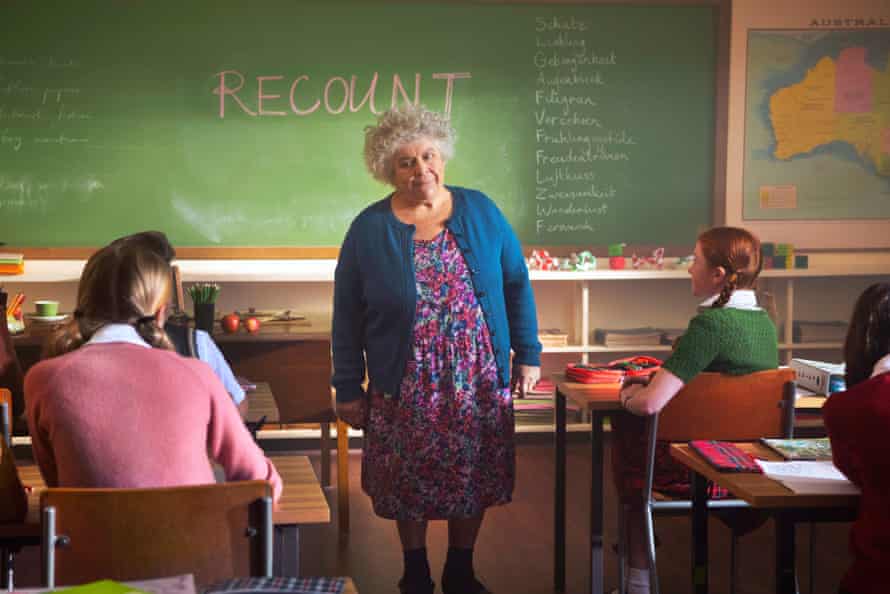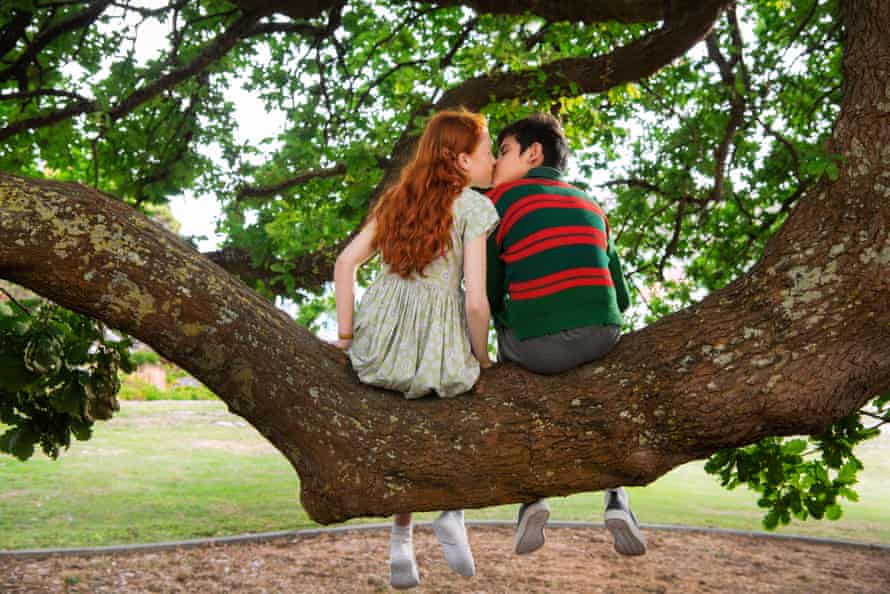Reviews of H & R Block Belfast Maine
T he director John Sheedy'southward coming of age film H is For Happiness – adapted from Barry Jonsberg's novel My Life Equally an Alphabet – is photographed in joyfully vivid means, as if inspired by the aesthetic of boiled lollies or rainbow-coloured cupcakes. The juicy, irresistible wait of the flick evokes the kid in the developed, while its narrative – most an idiosyncratic 12-year-old girl intent on solving the world'south bug, including and especially those in her ain family – evokes the developed in the child. There is plenty for youngsters to mull over without feeling similar they've been talked downwards to or lectured.
The freckled, cherub-faced Candice (an unforgettably vibrant Daisy Axon), with her Pippi Longstocking-similar vivid white teeth and pigtailed carmine hair, is the sort of character who is compulsively watchable on screen only would probably come up across as an insufferable do-gooder in real life. This is suggested early on in the piece, when Candice's school teacher Miss Bamford (Miriam Margolyes) asks if any of the students have questions about their consignment. And, of course, Candice does, cartoon from the course a big commonage sigh; they have been in this state of affairs before.

A new boy at her school becomes Candice'south bestie and potential love interest. He is Douglas Benson (Wesley Patten), whose full name, co-ordinate to Candice, is "Douglas Benson from Another Dimension". She has bestowed upon him this championship because Douglas does indeed claim to have travelled between planes of reality, while simultaneously conceding that his experiences in "manipulating dimensions and invoking gravity" is a gloried style of saying he fell out of a tree.
While delivering his backstory about crossing dimensions, Douglas complains about how "some idiot in a white glaze" made an "unscientific" and "bluntly, insufferable" diagnosis that he is mentally unwell. No kid speaks like that, of course. Nor does everyone – child or adult – limited themselves with the kind of magniloquence that comes out of Candice's oral fissure. "Your vocabulary is remarkable for a 12-year-quondam," her teacher says, highlighting an observation no doubt made past the audience. The silver-tongued youngster responds by explaining that her favourite book is the lexicon and she reads it every night.
The contrivance of the film'due south dialogue might have been in upshot in, say, a social realist film with a gritty street-side vibe. H is for Happiness is a very different experience, its bright syrupy surfaces the well-nigh obvious manifestation of a movie that, while more or less based in our world, has its head very much in the clouds, with regular inferences of the fantastical. What practice we make, for instance, of the small and beautiful white horse that follows Candice and Douglas into the forest, and seems to have walked right out of a picture volume? And do we think that Douglas Benson might actually exist from another dimension?
The cinematography of Bonnie Elliott (who recently shot The Hunting, Palm Embankment and Undertow), with its rainbow colours and loftier saturation, also infers magical qualities. Her gloss-lacquered surfaces are aided in no minor measure out by Nicki Gardiner'due south product design, Terri Lamera'due south costume pattern and Marita Mussett's art direction. H is for Happiness looks like the sort of motion-picture show people had a lot of fun making.
Sheedy deploys truckloads of one-signal perspective shots, directing viewers to the center of symmetrical compositions. The gimmicky pic-maker well-nigh closely associated with this type of image is the auteur Wes Anderson, who, like Sheedy, does non meet any conflict between dramatic and emotional truth and sweet-toothed visual artifice. H is for Happiness even dabbles in overhead nutrient photography – some other singled-out Andersonism. This, and the enchanting 2016 coming of age dramedy Girl Asleep, are probably the most Wes Anderson-like films in Australian history.

The word "quirky" comes to mind – though this a very fussy, captious kind of quirk, heavy on visual artistry and with a high-end, 'grammable sort of incandescence. The lollipop await of H is for Happiness suggests viewers are observing this globe through the optimistic eyes of a child, which makes for a particularly interesting experience when Lisa Hoppe'due south screenplay confronts the emotional diplomacy of adults. Candice's father Jim (Richard Roxburgh) and uncle Brian (Joel Jackson), for instance, practise not get along and accept deep wounds to heal. And her female parent Claire (Emma Berth) is prone to episodes of melancholia, sometimes seen staring glumly into the distance. She must run across her world in despairing monochrome.
The narrative arc builds towards a school theatre production, which is a cliche elevate-and-drop decision. But it'due south done in a way that's difficult if not impossible to detest, utilising the old trick of making poo jokes to lengthened sentimentality. There is much to capeesh in this moving-picture show; much to like. You lot don't only watch it in big bright colours; yous retrieve it in big bright colours too.
Source: https://www.theguardian.com/film/2020/feb/09/h-is-for-happiness-review-emotional-affairs-of-adults-seen-through-a-bright-childlike-lens

Belum ada Komentar untuk "Reviews of H & R Block Belfast Maine"
Posting Komentar